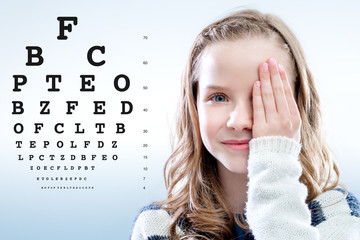The Important Role of Vision in Child Development
By Amanda Mazerall, OTR/L
Kids Place Central Pediatric Occupational Therapist
 The ability to see, and see clearly is often an overlooked skill. When working with a child, it is best practice to never assume that he or she is able to see until they have been evaluated by a professional. To ensure that your baby is seeing at his very best, it is recommended that he receive a comprehensive vision exam between 6-12 months of age. Infantsee is a Federal Program that will pay for such testing within the baby’s first year. You can locate providers within your area at www.infantsee.org. From there, your child should get a follow up eye exam at age 3, and again before they enter first grade.
The ability to see, and see clearly is often an overlooked skill. When working with a child, it is best practice to never assume that he or she is able to see until they have been evaluated by a professional. To ensure that your baby is seeing at his very best, it is recommended that he receive a comprehensive vision exam between 6-12 months of age. Infantsee is a Federal Program that will pay for such testing within the baby’s first year. You can locate providers within your area at www.infantsee.org. From there, your child should get a follow up eye exam at age 3, and again before they enter first grade.
Full maturity of eye movements should be developed by 4 years. Occupational therapists and Optometrists are two professionals who can assess your child’s vision. The following are skills that should be assessed:
- Pursuits/Tracking: the ability to follow a moving object. The professional testing your child’s tracking skills may not cue them to keep their head still. Moving their head to follow a moving object, having jerky eye movements or complaints of dizziness may be signs of a deficit.
- Saccades: quick movements of the eyes: This skill is used in reading and like pursuits, the child’s head should be able to remain still. The professional testing your child will look for undershoots (eyes not moving far enough to the left or right to fixate on a desired target) or overshoots (eyes looking past desired target).
- Near Point Convergence: the simultaneous inward movement of both eyes toward each other, typically in an effort to view an object close up. The professional testing your child will observe whether the child can focus their lenses while bringing both eyes towards the nose together to follow an object. Those who have convergence insuffiency may have double vision, have difficulty reading, or report that words move or jump.
- Amblyopia: decreased visual acuity in one eye. Amblyopia is often caused by suppression of one eye. The professional treating your child may suggest patching the dominant eye to help stimulate the brain and keep visual pathways healthy.
Visual problems can cause great difficulties in school work, sports, and leisure activities. Could your child be having vision problems? Signs of vision problems may manifest as the following:
- Difficulties with fine motor control
- Difficulties catching a ball
- Difficulties with balance
- Difficulties with reading
- Difficulties with depth perception
- Frequent headaches
- Letter reversals
- Rubbing eyes when looking at items close up
If you feel your child can benefit from an occupational therapy evaluation, please contact Kids Place!






